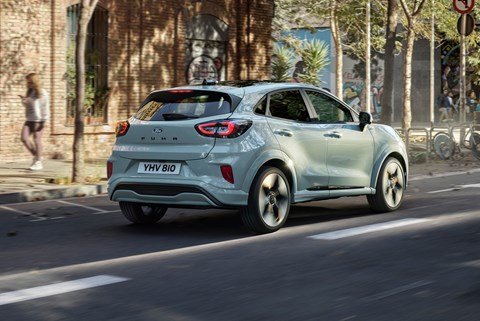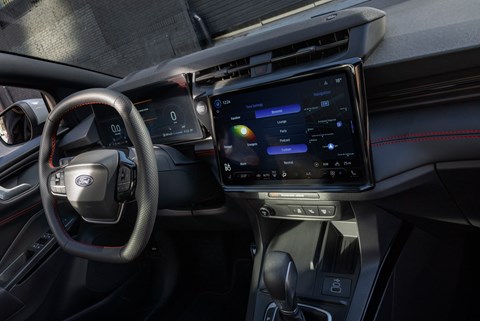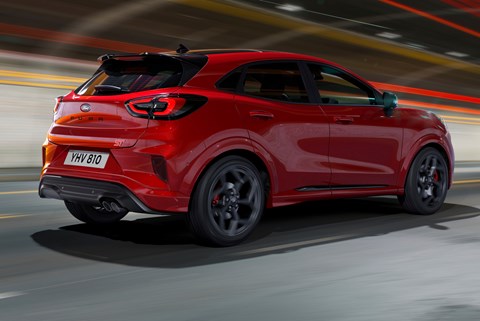► Ford’s refreshed Puma crossover revealed
► More screen-heavy interior, plus slower ST model
► Facelift revealed ahead of upcoming ‘Gen-E’ electric model
The phrase ‘if it ain’t broke, don’t fix it’ exists for a reason. And yet, it seems Ford has decided to ignore that advice when it comes to facelifting its Puma crossover for 2024.
Ford’s Puma is a huge seller – the bestselling car in the UK in 2023 – and is known for its keen handling, relatively no-nonsense (if a bit low-rent) interior and potent, fun Puma ST model. While we can’t say too much on how the updated Puma drives just yet, on paper, those other two points have been considerably messed with.

This facelift comes as Ford prepares to launch a pure-electric Puma, which is due later in 2024. Our intel suggests the electric Puma – which will run with a ‘Gen-E’ nameplate – won’t change much visually compared to the cars that still use combustion engines like we see here.
But, instead of giving its massive seller a meaningful refresh that fixes the niggles people have with the pre-facelift car, it’s giving us things we arguably don’t want. Go figure.
But it still looks like a Ford Puma…
And that’s how they hook you in. Besides some slightly different front DRLs and new wheel designs, there really isn’t much at all to tell the pre- and post-facelift Puma apart by exterior design alone. It’s still a dinky crossover that is now Ford’s smallest car given the demise of the Fiesta, and it still features clever details like the MegaBox – an additional 80-litre compartment beneath the boot floor.

The interior itself, which was a bit of a weak link for the Puma, has been given a proper going over. And, if you’ve got your 2024 facelift bingo card with you, you can strike off ‘buttons replaced with screens’.
Instead of a neatly laid out, if a little tinny, dashboard with physical climate control switchgear and a modest-but-usable screen, Ford has installed a large 12.8-inch digital display as standard in all Puma models, as well as a rather large 12-inch central infotainment screen. Doing so has removed pretty much every physical button from the Puma’s interior, besides the ones that feature on the new twin-spoke steering wheel.

What specs of Puma can I now get?
The Puma’s 1.0-litre EcoBoost engines are all badged as ‘hybrids’ now, despite them only being so in the mildest sense. If you go for a regular Puma, you can choose from a 123bhp version with either a six-speed manual or a seven-speed automatic, or a 153bhp model available with that seven-speed auto only.

Those of you who are fans of Ford’s ST models, as we are, will be bitterly disappointed by the refreshed Puma ST. Gone is the 197bhp 1.5-litre, manual gearbox firecracker that’s well liked (especially given it was one of few remaining sporty Fords remaining) – all we’re left with is the fairly bland 168bhp automatic model. This ‘ST Powershift’ model was introduced pre-facelift and we were pretty unmoved by it, particularly because it’s slower and less engaging than the fantastic manual one.
So there you go: a lesson or two in how to make a great, high-selling car less great.
What if I still want an updated Puma?
Then get yourself in line. Prices start at £25,790.